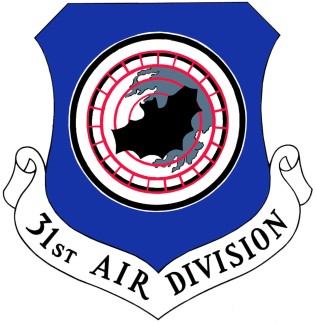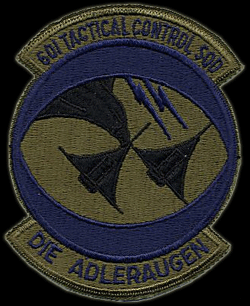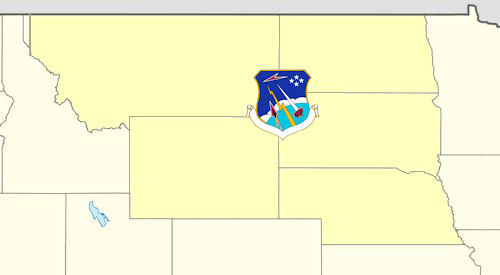|
Chandler AFS
Chandler Air Force Station is a closed United States Air Force General Surveillance Radar station. It is south of Chandler, Minnesota, on the Buffalo Ridge in section 13 of Moulton Township, Murray County. It was closed in 1969. History In late 1951 Air Defense Command selected the site as one of 28 radar stations built as part of the second segment of the permanent radar surveillance network. Prompted by the start of the Korean War, on July 11, 1950, the Secretary of the Air Force asked the Secretary of Defense for approval to expedite construction of the second segment of the permanent network. Receiving the Defense Secretary's approval on July 21, the Air Force directed the Corps of Engineers to proceed with construction. The 787th Aircraft Control and Warning Squadron was activated at Moulton, MN on 27 June 1951. The site was equipped with AN/FPS-3 and AN/FPS-4 radars, and initially the station functioned as a Ground-Control Intercept (GCI) and warning station. As a GC ... [...More Info...] [...Related Items...] OR: [Wikipedia] [Google] [Baidu] |
Air Defense Command
Aerospace Defense Command was a major command of the United States Air Force, responsible for continental air defense. It was activated in 1968 and disbanded in 1980. Its predecessor, Air Defense Command, was established in 1946, briefly inactivated in 1950, reactivated in 1951, and then redesignated ''Aerospace'' rather than ''Air'' in 1968. Its mission was to provide air defense of the Continental United States (CONUS). It directly controlled all active measures, and was tasked to coordinate all passive means of air defense. Air defense during World War II Continental United States air defense forces during World War II were initially under the command of the four air districts – Northeast Air District, Northwest Air District, Southeast Air District, and Southwest Air District. The air districts were established on 16 January 1941, before the Pearl Harbor attack. The four air districts also handled USAAF combat training with the Army Ground Forces and "organizati ... [...More Info...] [...Related Items...] OR: [Wikipedia] [Google] [Baidu] |
31st Air Division
The 31st Air Division (31st AD) is an inactive United States Air Force organization. Its last assignment was with Air Defense Command, assigned to Tenth Air Force, being stationed at Sioux City Municipal Airport, Iowa. It was inactivated on 31 December 1969. History Assigned to Air Defense Command (ADC) for most of its existence, the division equipped, administered, trained, and provided combat ready forces within an area covering North Dakota, South Dakota, Nebraska, Minnesota, and other parts of the Midwest. The division participated in numerous live and simulated exercises such as Creek Chief, Pawnee Knife, and Mandan Hunt. Later, beginning in 1966, the 31st assumed responsibility for the former Oklahoma City Air Defense Sector and covered an area including Texas, Oklahoma, Arkansas, and Louisiana. Assumed additional designation of 31st NORAD Region after activation of the NORAD Combat Operations Center at the Cheyenne Mountain Complex, Colorado and reporting was transfe ... [...More Info...] [...Related Items...] OR: [Wikipedia] [Google] [Baidu] |
1969 Disestablishments In Minnesota
This year is notable for Apollo 11's first landing on the moon. Events January * January 4 – The Government of Spain hands over Ifni to Morocco. * January 5 ** Ariana Afghan Airlines Flight 701 crashes into a house on its approach to London's Gatwick Airport, killing 50 of the 62 people on board and two of the home's occupants. * January 14 – An explosion aboard the aircraft carrier USS ''Enterprise'' near Hawaii kills 27 and injures 314. * January 19 – End of the siege of the University of Tokyo, marking the beginning of the end for the 1968–69 Japanese university protests. * January 20 – Richard Nixon is sworn in as the 37th President of the United States. * January 22 – An assassination attempt is carried out on Soviet leader Leonid Brezhnev by deserter Viktor Ilyin. One person is killed, several are injured. Brezhnev escaped unharmed. * January 27 ** Fourteen men, 9 of them Jews, are executed in Baghdad for spying for Israel. ** Rev ... [...More Info...] [...Related Items...] OR: [Wikipedia] [Google] [Baidu] |
1951 Establishments In Minnesota
Events January * January 4 – Korean War: Third Battle of Seoul – Chinese and North Korean forces capture Seoul for the second time (having lost the Second Battle of Seoul in September 1950). * January 9 – The Government of the United Kingdom announces abandonment of the Tanganyika groundnut scheme for the cultivation of peanuts in the Tanganyika Territory, with the writing off of £36.5M debt. * January 15 – In a court in West Germany, Ilse Koch, The "Witch of Buchenwald", wife of the commandant of the Buchenwald concentration camp, is sentenced to life imprisonment. * January 20 – Winter of Terror: Avalanches in the Alps kill 240 and bury 45,000 for a time, in Switzerland, Austria and Italy. * January 21 – Mount Lamington in Papua New Guinea erupts catastrophically, killing nearly 3,000 people and causing great devastation in Oro Province. * January 25 – Dutch author Anne de Vries releases the first volume of his children's novel ''Journey Through the Night' ... [...More Info...] [...Related Items...] OR: [Wikipedia] [Google] [Baidu] |
Buildings And Structures In Murray County, Minnesota
A building, or edifice, is an enclosed structure with a roof and walls standing more or less permanently in one place, such as a house or factory (although there's also portable buildings). Buildings come in a variety of sizes, shapes, and functions, and have been adapted throughout history for a wide number of factors, from building materials available, to weather conditions, land prices, ground conditions, specific uses, prestige, and aesthetic reasons. To better understand the term ''building'' compare the list of nonbuilding structures. Buildings serve several societal needs – primarily as shelter from weather, security, living space, privacy, to store belongings, and to comfortably live and work. A building as a shelter represents a physical division of the human habitat (a place of comfort and safety) and the ''outside'' (a place that at times may be harsh and harmful). Ever since the first cave paintings, buildings have also become objects or canvasses of much art ... [...More Info...] [...Related Items...] OR: [Wikipedia] [Google] [Baidu] |
Semi-Automatic Ground Environment Sites
Semi-automatic - ''Noun'': "Partially automatic and partially manual in operation (i.e., operated both automatically and manually, by hand); not ''fully-automatic''." This may refer to: * A semi-automatic firearm, a firearm which automatically loads the next round, but will only fire one round per trigger pull ** Semi-automatic rifle ** Semi-automatic pistol ** Semi-automatic shotgun * Semiautomatic switching system, a term used in telecommunication * Semi-automatic transmission: a manual transmission with an automated clutch (i.e., no physical clutch pedal), but the driver is still required to shift gears manually, by hand. Also called: ''clutchless manual transmission'' or ''automated manual transmission''. * "Semi-Automatic", a song from Twenty One Pilots' 2013 album '' Vessel'' [Baidu] |
Installations Of The United States Air Force In Minnesota ) or political one
{{disambig ...
Installation may refer to: * Installation (computer programs) * Installation, work of installation art * Installation, military base * Installation, into an office, especially a religious (Installation (Christianity) Installation is a Christian liturgical act that formally inducts an incumbent into a new role at a particular place such as a cathedral. The term arises from the act of symbolically leading the incumbent to their stall or throne within the cathedra ... [...More Info...] [...Related Items...] OR: [Wikipedia] [Google] [Baidu] |
United States General Surveillance Radar Stations
United States general surveillance radar stations include Army and USAF stations of various US air defense networks (in reverse chronological order): * Joint Surveillance System (JSS), with radar stations controlled by joint FAA/USAF ROCCs beginning in 1980 * SAGE radar stations, for the Semi-Automatic Ground Environment network prior to the JSS (the 1st SAGE squadrons were designated in 1958) * Alaska Ring radar net, the radar stations of Alaskan Air Command * Permanent System radar stations, the Air Defense Command manual network of radar stations prior to deployment of SAGE * Lashup Radar Network radar stations, the radar stations deployed 1950-2 when the "Radar Fence" Plan was not approved * Temporary radar net, the "five-station radar net" established in 1948 * Army Radar Stations, World War II installations of the Aircraft Warning Service with radars ( cf. filter centers, Ground Observer Corps stations, etc.) By usage: * RBS Express sites, temporary stations for Radar Bomb S ... [...More Info...] [...Related Items...] OR: [Wikipedia] [Google] [Baidu] |
List Of United States Air Force Aircraft Control And Warning Squadrons
This Article is a list of United States Air Force aircraft control and warning squadrons active, inactive, and historical. The purpose of a ''aircraft control and warning squadron'' is to provide an airborne radar picket to detect vessels, planes, and vehicles before they enter an area of operations, as well as providing command and control in an engagement by directing aircraft strikes. Additionally they may be used to carry out surveillance, including over ground targets. Site codes Sites within the United States * DC-xx Semi-Automatic Ground Environment (SAGE) Direction Center/Combat Center. * F-xx Alaskan air defense sites. * H-0x Hawaiian air defense sites. * L-xx Original Air Defense Command (ADC) 1946 "Lashup" Radar Network of temporary sites to provide detection at designated important locations using radar sets left over from World War II. * LP-xx "Lashup" site which was incorporated into the first ADC permanent radar network in 1949. * P-xx Original 75 permanent statio ... [...More Info...] [...Related Items...] OR: [Wikipedia] [Google] [Baidu] |
29th Air Division
The 29th Air Division (29th AD) is an inactive United States Air Force organization. Its last assignment was with Air Defense Command, being stationed at Duluth International Airport, Minnesota. It was inactivated on 15 November 1969. History Assigned to Air Defense Command (ADC) for most of its existence, the division's mission was the air defense of Montana, Idaho, Wyoming, and parts of Nevada, Utah, and Colorado. By 1953, the area changed to include North Dakota, South Dakota, and Nebraska. The 29th supervised the training of its units, and participated in numerous training exercises. The division moved from Richards-Gebaur Air Force Base, Missouri, to Duluth International Airport, Minnesota, on 1 April 1966 as part of an ADC reorganization, the division's area changed to include Minnesota, parts of Wisconsin, and North Dakota, and later expanded to cover most of Iowa. Assumed additional designation of 29th NORAD Region after activation of the NORAD Combat Operations Ce ... [...More Info...] [...Related Items...] OR: [Wikipedia] [Google] [Baidu] |
30th Air Division
The 30th Air Division (30th AD) is an inactive United States Air Force organization. Its last assignment was with Air Defense Command, assigned to Tenth Air Force, being stationed at Sioux City Municipal Airport, Iowa. It was inactivated on 18 September 1968. History Assigned to Air Defense Command (ADC) for most of its existence, the division's initial mission was the air defense of the upper Great Lakes region of the United States. The 30th equipped, administered, trained, and provided operationally ready forces to the appropriate commanders for air defense. The division trained attached and assigned units and supervised and participated in numerous exercises such as Kiowa Knife and Mandan Indian. Moved to Sioux City Municipal Airport in 1966 as part of an ADC reorganization and became responsible for air defense a large area of the upper Midwest after the inactivation of the Sioux City Air Defense Sector. Assumed additional designation of 30th NORAD Region after activat ... [...More Info...] [...Related Items...] OR: [Wikipedia] [Google] [Baidu] |
Sioux City Air Defense Sector
The Sioux City Air Defense Sector (SCADS) is an inactive United States Air Force organization. Its last assignment was with the Air Defense Command 29th Air Division, being stationed at Sioux City Air Force Station, Iowa. History SCADS was established in October 1958 assuming control of former ADC Central Air Defense Force units in western Iowa, most of Nebraska along with southern South Dakota. Also provided air defense over parts of Minnesota, Colorado and Wyoming. The organization provided command and control over several aircraft and radar squadrons. On 1 December 1961, the new Semi Automatic Ground Environment (SAGE) Direction Center (DC-22) became operational. DC-22 was equipped with dual AN/FSQ-7 Computers. The day-to-day operations of the command was to train and maintain tactical flying units flying jet interceptor aircraft ( F-94 Starfire; F-102 Delta Dagger; F-106 Delta Dart) in a state of readiness with training missions and series of exercises ... [...More Info...] [...Related Items...] OR: [Wikipedia] [Google] [Baidu] |

.jpg)





